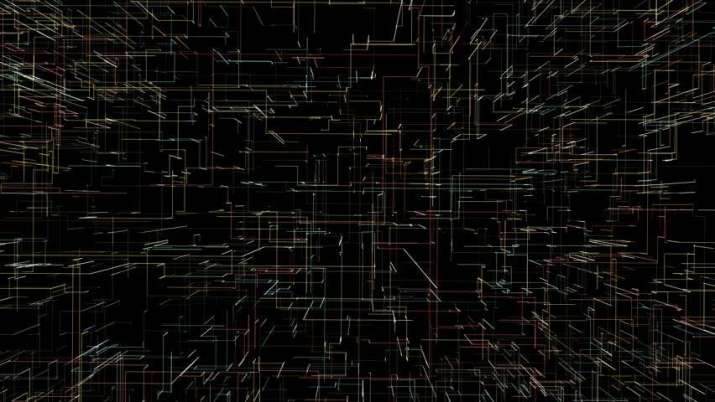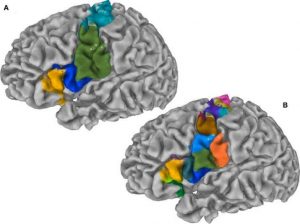
By mapping possible relationships between the teachings of the Buddha and principles of technology engineering, this column provides new perspectives for both Dharma practitioners and technologists, and fuels renewed interest in the synergy of both areas. Sangha members from all over the world are increasingly relying on new technologies to deliver and practice the Dharma, and engineers and technologists from all ranks and industries are practicing the Dharma as a means of coping with various kind of pressures, stress, and delusions. In 2019, this column will continue to capture the essence of this convergence as the development of the two is increasingly linked by the active study of the evolution of both, with particular attention to their co-evolution.
Ultimately, understanding and following the Dharma constitutes a path of evolution of mind and consciousness, and technology development is very much a part of that evolution. Sometimes it contributes constructively, by increasing knowledge, peace, and by contributing to enlightenment, and at other times in destructive ways by adding to annoyances and bringing obscurations and afflictions. The more the correlation between the Dharma and technology is understood, the better, hopefully, more constructive technology can be designed and built. How the two influence each other and co-evolve is, from a research perspective, the most interesting aspect of this process.
This first article of 2019 relates to the notion of emptiness, a fundamental concept both in Buddhism and cyberspace, touching briefly upon some engineering practices, both in the physical and the digital worlds.
On emptiness
In Buddhist philosophy, emptiness (Skt: sunyata) can be considered like a canvas on which nature and the visible universe manifest and unfold, and a whole philosophy and lifestyle are associated with its understanding and appreciation. Western culture has not typically made emptiness a subject of scholarly study, but Eastern philosophies have an inherent appreciation of emptiness and its role in shaping everything that exists, and that is useful thanks to metaphors such as: “it is the hollow that makes vessels such as cups and spoons useful to eat and drink, it is the hollow in the wall such as doors and windows that make the room useful and usable.”
It is, for one, in Lao Tzu’s writing that we find these metaphors:
Thirty spokes share the wheel’s hub;
It is the center hole that makes it useful.
Shape clay into a vessel;
It is the space within that makes it useful.
Cut doors and windows for a room;
It is the holes which make it useful.
Therefore, profit comes from what is there;
Usefulness from what is not there.
(Tao Te Ching, verse 11)
Emptiness is a fascinating subject, and somewhat paradoxically no amount of attention, discipline, or concentration is sufficient to describe it. How can one describe, understand, and apply the notion of emptiness both in philosophy and technology? When thinking about emptiness, even just trying to conceive of it is a powerful mind-bending exercise around which much Dharma teaching and practice is centered.
On engineering emptiness
This difficulty in conceptualizing emptiness is not only a challenge for meditators and Buddhist practitioners. The first time I came across an engineer facing emptiness at a technical level was in a conversation with my colleague Jonathan Corney at the University of Strathclyde in Glasgow, where I was writing my PhD thesis. He told me that during a particularly technical problem-solving exercise he and his colleagues faced the challenge of identifying and representing surface holes in the many dimensions, and they could not find a technique that could support the modelling of holes and pockets of space in materials because ‘they are not there,’’ and they had to come up with a new method to work around the absence of mass.*
After that initial conversation, I discovered that there is a whole field of engineering focused on emptiness, which is described as negative mass, and non-occupied energy levels.**
Ultimately, we are not seeing emptiness, but we can infer it from what we see around it. Another example of technical challenges associated with emptiness is provided by the construct of the blank node, defined as an “existential variable” in semantic web technologies, that emerged from the need to represent incomplete information in database theory.***
Even in technology and engineering, emptiness—what is not there—needs to be represented and handled adequately by some kind of mind workaround.
On cyberspace
As science and technology become more complex and move further away from low-level mechanics and physics, psychology and cognition are becoming increasingly relevant to understand and to design sophisticated intelligent systems. Even in engineering, concepts such as self-awareness and reasoning are capabilities that must be modeled on human features.
Quantum physics demonstrates that the energy underlying and shaping physical manifestations may ultimately exist at a subtle, intangible level, and that what is considered by science as “physical” and tangible may in fact be an expression, or a manifestation, of what is otherwise considered “spiritual.”****
The term “cyberspace” was coined by William Gibson in his novel Neuromancer (1984). It comprises two etymological roots: cyber, which comes from the Greek verb kubernan or “to steer,” which is also the root of the word “to govern,” pointing to navigation and control, and space, from the Latin spatium which means room, area, distance, stretch of time, also used to refer to period of time, distance, and interval.
Conceptually and visually, space can be envisaged as emptiness, as what is not there, or a state of containing nothing. By definition interactive and highly dynamic, cyberspace is made up of communication channels and nodes and can be characterized by the use of electronics that store, modify, and exchange data via networked systems and associated physical infrastructures.*****
The World Wide Web is the “read and write” layer of cyberspace, allowing people to communicate via the exchange of digital information, typically by using digital objects (files, mail messages, graphics, etc.) Since its inception (in the late 1980s) the public layer of cyberspace is accessed and navigated by most people via web browsers, which offer a visual and auditory experience, and relate to the cognitive sphere of being. Some programs, such as computer games and virtual reality, give users visual, auditory, and even tactile experiences that can make cyberspace feel as “real” as the physical world.
The most powerful platform and enabler for innumerable digital technological and social innovations, cyberspace has become the main hub for almost everything, from learning to collective intelligence, self-organization, political awareness and mobilization, and last but not least, all aspects of knowledge discovery, including knowledge leading to practical sustainable knowhow: how to grow vegetables, how to save the planet, how to produce electricity at home etc., as well as providing access to knowledge about the meaning of life, for instance in the form of philosophy, history, or mathematics.
Today, virtually everyone can access all existing online literature in any field of human knowledge, find mentors, join online communities, and participate in all human activities, simply by understanding how to use and access the web. Although the digital divide is still a reality—not everyone has linguistic and computer literacy,or access to low-cost internet, or a device—the gap is narrowing and will likely close in future generations.
Thanks to the convergence and interconnectedness of knowledge and technology, cyberspace—an empty, interactive space for creative development—is an ideal platform for the Dharma to evolve in novel, powerful ways. It can spread across relative and ultimate dimensions where precious and powerful Dharma jewels in the form of darshans, songs, dances, and wisdom can manifest as tweets, posts, texts, videos, and live webcasts. There is no doubt that cyberspace is a perfect artifact to reflect the vastness and profoundness of sunyata.
* Corney, J. And D. E. R. Clark. 1991. “Method for finding holes and pockets that connect multiple faces in 2 1/2D objects.” Computer-Aided Design23(10): 658-668
** Alvarez, L. 2013. “Introduction of the concepts of hole and effective mass using an alternative to the E-k diagram.” Revista Mexicana de F ́ısica 59: 128–132
*** Everything You Always Wanted to Know About Blank Nodes (Aidan Hogan)
**** Can Energy Exist Without Mass (Physics Forums)
***** What is Cyberspace (Webopedia)
References
Mukhopadhyay, S. 1943. “Doctrine of Sunyata in Mahayana Buddhism.” Prabuddha Bharata, XLVIII: 327-329.
Gibson, W. 1984. Neuromancer. Ace Books: New York.














